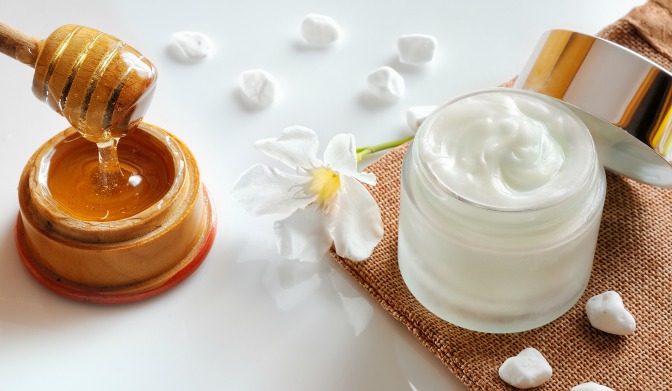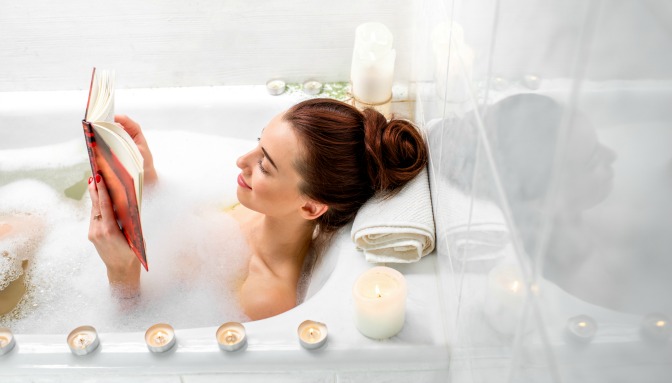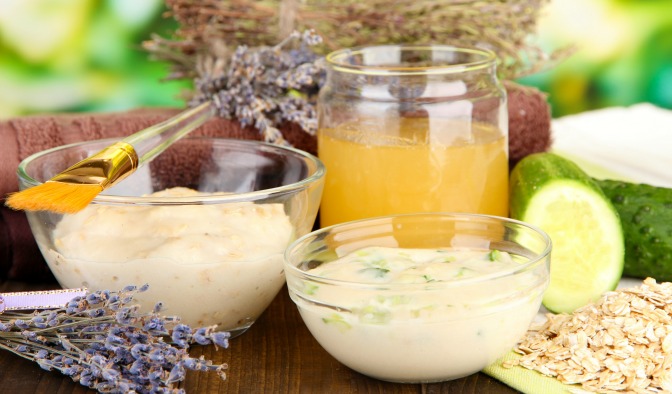Ah, winter. Fresh snow, cozy sweaters, hitting the slopes, curling up with a steaming cup of hot chocolate… and dealing with dry skin!
While you might be looking forward to lacing up your skates, we’re betting you’re not thrilled about itchy skin and cracked hands. Your instinct is probably to reach for your favorite moisturizer and slather it on generously, but sometimes that just won’t cut it.
So how do you ditch dry skin once and for all? It’s probably no surprise to hear that there’s no magical cure that works for everyone—but there are tricks that will help your skin’s recovery.
Here are our top 7 tips for dealing with dry skin at any time of year!
Pick the right moisturizer
Okay, you don’t have to become a makeup artist to know a moisturizer should be your go-to for dry skin. But not every moisturizer is born equal, and with so many of them out there, it’s tough to know where to start.
Many people think the best way to banish dry skin is to go for the thickest, richest moisturizer possible. In general, it’s a pretty good rule; a thick, greasy cream is probably going to do a better job at keeping your skin hydrated than something that’s thin and watery.
But what you should really be looking at are the ingredients. Go for a product containing natural oils—in fact, you can even use a natural oil on its own to help lock in moisture. The oils your skin produces can easily get stripped away by washing your hands or over-cleaning your face, so using oils and oil-based products in your daily routine helps replenish your skin’s natural moisture seal.
Of course, pure oils may be too heavy for some faces, so there’s nothing wrong with looking for a lighter product that balances out oil with water. And don’t think oily or acne-prone skin will kill your moisturizing potential—just look for a product that’s non-comedogenic to make sure you’re not blocking your pores.

If you’re still struggling, check to see if your current product contains alcohols or fragrances. They’re common ingredients for a lot of commercial moisturizers, but for some people they can cause irritation or even an allergic reaction. Even if your skin isn’t that sensitive, they can still strip away oil from your skin and dry it out even more.
Unfortunately, this may mean saying goodbye to your favorite yummy-smelling moisturizer, but if it keeps your skin from flaking and itching? Totally worth it.
Moisturize, moisturize, moisturize!
Didn’t we just talk about moisturizing? Yes, but we’re going to talk about it again. It’s that important.
You might have picked the right product, but it won’t do much for you if you’re not using it right. To get the most out of your moisturizer, you should be using it regularly—not just on days when your skin is acting up. Making it part of your daily routine can help keep your skin healthy all the time and avoid those skin emergencies.
The best time to apply? Right after you get out of the shower. Your skin is already nice and hydrated, so take advantage of it by locking in moisture now.
No scrubbing, please
There’s always a temptation to scrub your flaky skin away with a harsh exfoliator. It may be satisfying, but it’s definitely a temporary fix; in the long run, it’s just going to irritate your skin even more.
Don’t cut exfoliating out of your beauty routine altogether, but make sure you’re doing it gently. Use warm water, a mild exfoliator, and a soft cloth and towel to get rid of dead skin without damaging the rest of it.
This goes for non-exfoliating soaps, too. Even if you’re prone to acne, a harsh cleanser isn’t doing you any favors. Instead, opt for a milder formula with moisturizing ingredients—or even ditch the soap altogether and look for a cleanser that’s soap-free.
Just like with your moisturizer, that cupcake-scented soap may have to go. Unscented or naturally scented products are way easier on your skin, and less likely to strip away your natural oils.
And it doesn’t stop with the soap—your toweling method may need a few tweaks too. It may take an extra minute, but pat your skin dry instead of scrubbing to keep from damaging your skin even more.
Shower smarter

Brr—sadly, even though a long, steamy shower may sound like just the thing to warm you up after a frigid day on the slopes, it won’t help your skin.
Experts recommend limiting yourself to one 5-10 minute warm (not hot) shower a day—but come on, we all know that’s not going to happen! Don’t worry: there are still ways to change your shower habits for the better without getting too extreme.
Especially for those of us with long, thick hair, a 10-minute shower may not be an option. If you can, though, cutting back on the time you spend in the shower can help keep your skin from drying out.
Try turning down the temperature, too; you don’t need to shiver your way through a lukewarm shower, but keeping the water warm instead of hot (or hot instead of scalding—baby steps, right?) is also a good call. The reason? Super hot water makes your blood vessels dilate, leading to water loss in the top layer of your skin.
If you’re looking to relax with a long, hot bath once in a while, adding a little oil to the water before you start soaking can help you relax as well as keeping your skin nice and soft.
Eat smarter, too
You’ve become a makeup artist, not a doctor, but it’s just common sense that what you eat affects your health—including the health of your skin.
Some nutrients are more important than others. Here’s the rundown of what to look for and where to find it to keep your skin healthy and happy:
- Omega 3 fatty acids: try fish, nuts, or seeds
- Healthy fats: try avocados, coconut oil, or olive oil
- Antioxidants: try citrus fruits, pomegranates, sweet potatoes, or green tea
- Vitamin C: try citrus fruits, juices, strawberries, or broccoli
- Vitamin E: try nuts, avocados, spinach, or fish
- Zinc: try fish, whole grains, nuts, or seeds

And let’s not forget the big one: water. It pretty much goes without saying—but knowing you should be staying hydrated and actually staying hydrated can be two completely different things. Your schedule is probably crazy enough already without trying to remember to keep drinking water throughout the day.
Start small. Try carrying a water bottle with you, or find other ways to work water into your day, like drinking a big glass when you wake up in the morning. If water is too boring, spice it up by infusing your drink with pieces of fruit or mint leaves, or snacking on more high-water-content fruits and veggies. Just avoid trading water for sugary sodas, however strong the temptation might be.
Adjust to your environment
Or adjust your environment to you. Indoor heating tends to circulate very dry air, which in turn can dry out your skin. Combat the dryness with a humidifier when you’re inside.
For the great outdoors, protect your skin from harsh winds by wrapping up when you go outside. And just because it’s winter doesn’t mean you can ditch the sunscreen—applying some to any exposed areas before you go out helps save your skin from sun damage. Yes, even if it’s overcast.
If this is too much of a chore, try using a daily moisturizer with an SPF of 15 or more to build sun protection into your routine.
Try a natural remedy
Ever looked at the price of a fancy moisturizer or face mask? Yikes! Becoming a makeup artist has probably taught you that paying more usually does get you better products—but when it comes to skincare, there are also lots of natural remedies that work just as well as a fancy cream without breaking your budget.

Are you looking to soothe irritated skin? Clear away dead skin? Add some moisture? There are natural remedies for all of those problems, and more. Here are a few of our top picks for easy recipes right out of your own refrigerator:
- Avocado and olive oil: Mash up an avocado with a bit of olive oil for a moisturizing face mask.
- Honey and oatmeal: Use a mixture of oatmeal, honey, and a little warm water to gently exfoliate, or leave it on for 15 minutes or so as a soothing mask.
- Honey and salt: Use this mixture to exfoliate dry skin anywhere on your body, then rinse with warm water. Mixing sugar with a little olive oil also works well for an exfoliating, moisturizing scrub.
While some of these tips might work for you, others may not. Don’t give up! Try a combination of these methods and see what works best for your own unique skin.
Are there other tricks you’ve discovered on the path to becoming a makeup artist? Let us know how you deal with dry skin in the comments below!
